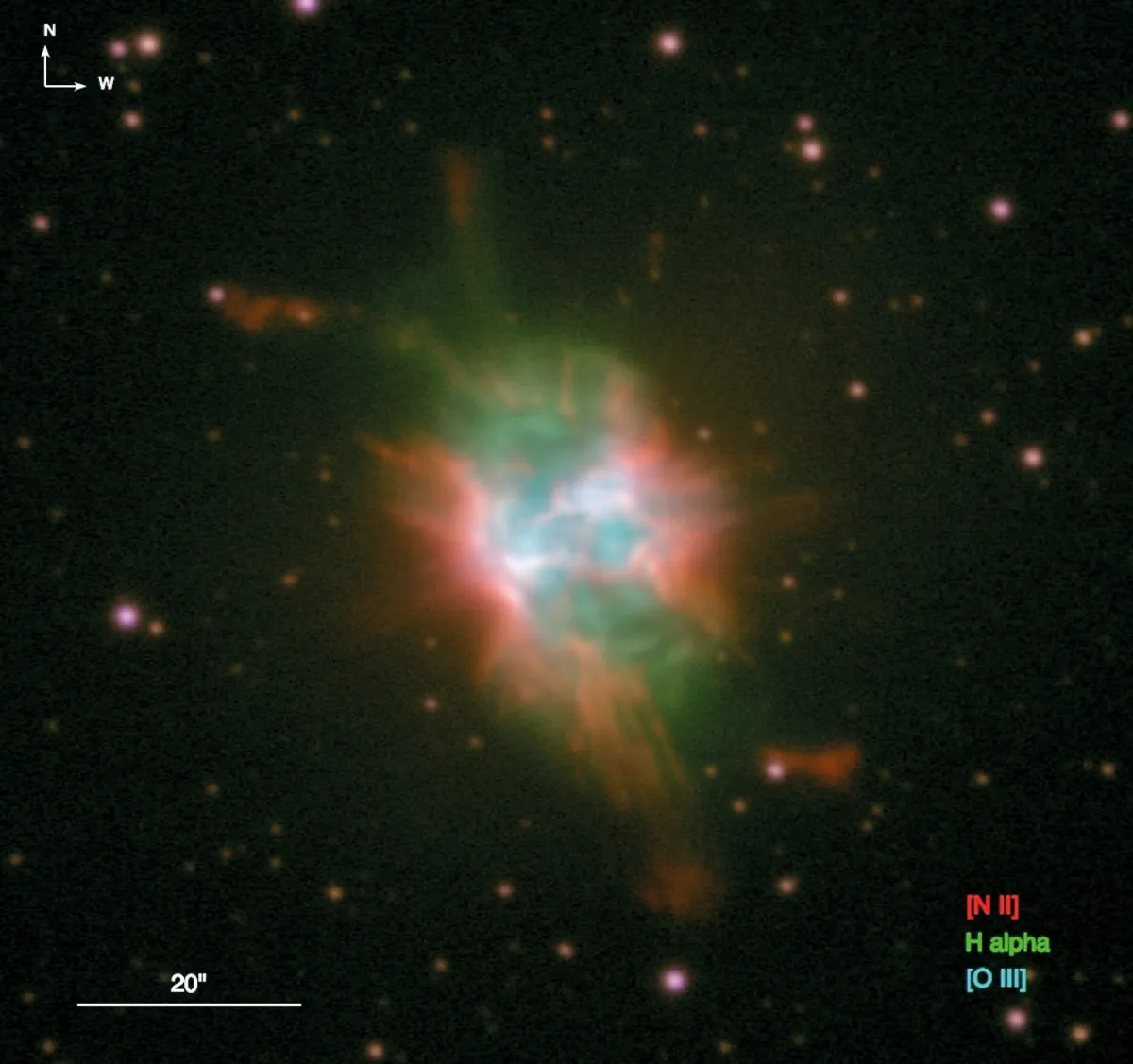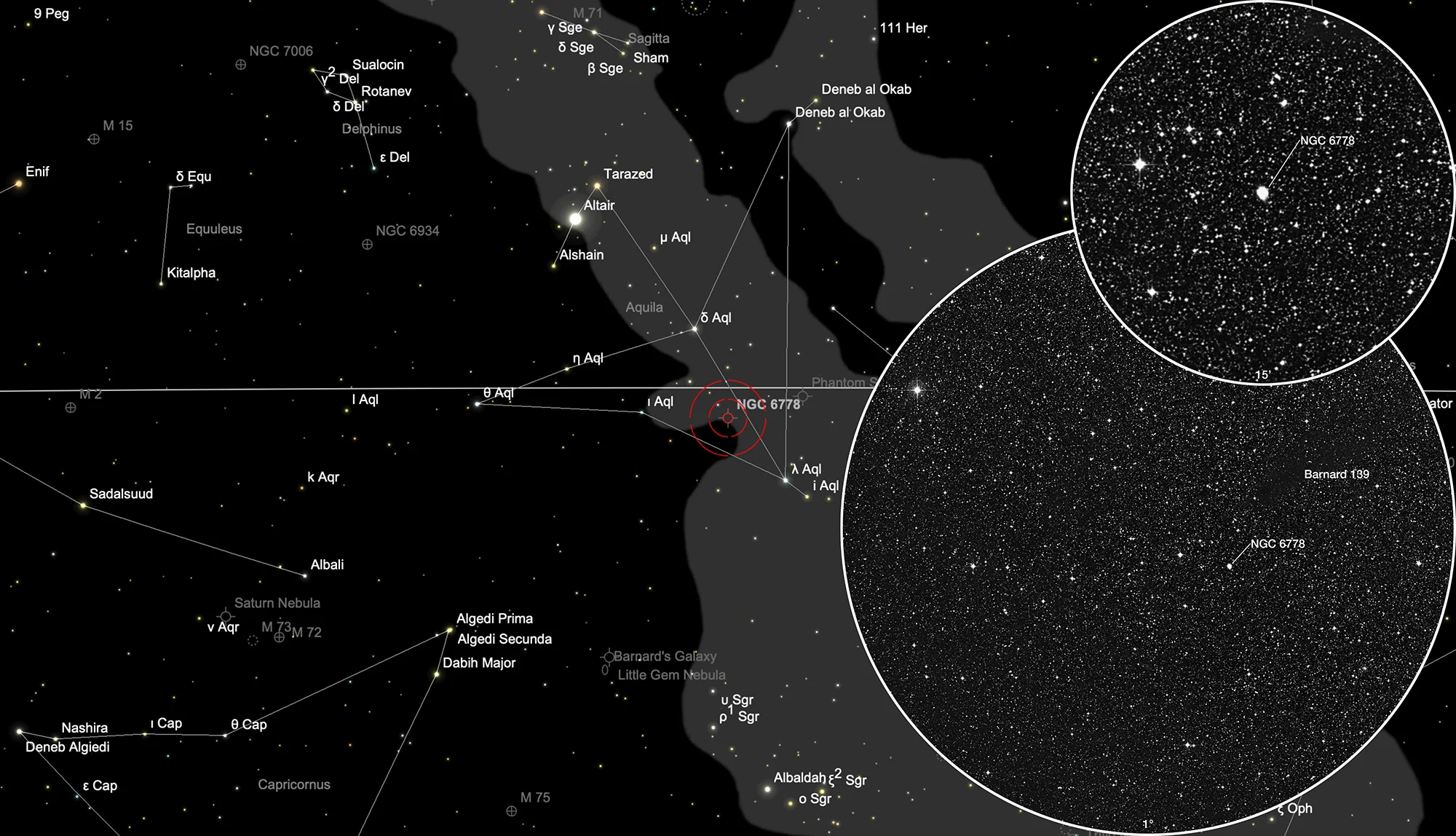Planetary Nebula NGC 6778

History
This planetary nebula was first discovered by John Herschel on 21 May 1825 using his 18.3 inch reflecting telescope. In his «Slough Catalogue» of 1833 he listed it as h 2038 and noted: «An extremely small stellar nebula = a star 15m; it is 2/3 of a diameter of field (=10') from a double star which it follows to the south. Position from the star = 240° ±. The RA is excessively loose.» [466] In his «General Catalogue» of 1864 he listed it as GC 4490 and just noted: «extremely small, stellar». [467] That entry later in 1888 became NGC 6785 in Dreyers «New General Catalogue». [313]
On 25 June 1863 the German Astronomer Albert Marth looked through William Lassell's 48 inch reflector on Malta and also discovered the same nebula. He described it as «small, extended ill-defined disc». In 1888 Edward Charles Pickering classified the nebula as a planetary. [141] Later in 1888 it was listed as NGC 6778 in Dreyers «New General Catalogue». [313] Today the object is generally referred to as NGC 6778.
Physical Properties
NGC 6778 is a bipolar planetary nebula with a short orbiting (~0.15 days) binary central star. It displays two systems of fast collimated outflows with a radial velocity of ~100 km/s. The equatorial ring is highly disrupted with many radial features like filamentary wisps and cometary knots. [614] The visual magnitude is 14.8 and heliocentric distance 3.1 kpc. [145]
| Designations | PN G034.5-06.7: NGC 6778, PK 34-06.1, ARO 72, Sa 2-388, VV 227, VV' 491 |
| Right Ascension (J2000.0) | 19h 18m 25s |
| Declination (J2000.0) | -01° 35' 53" |
| Dimensions | 15.8" (optical) |
| Distance | 1.0 kpc |
| Radial Velocity | +91.0 ± 3.0 km/s |
| Expansion Velocity | 20.0 (O-III) km/s |
| C-Star Designations | AG82 362, CSI -01 -19156, HD 180871, PLX 4502 |
| C-Star Magnitude | B: 16.91 |
| Discoverer | PICKERING 1882 |
Finder Chart
The planetary nebula NGC 6778 is located in the constellation Aquila, just 1.5° northeast of the brighter planetary neblua NGC 6772. You may want to find NGC 6772 first and then hop to NGC 6778. On 11 July it is in opposition to the Sun and crosses the meridian at local midnight. The best time to observe it is during the months of March to December.
